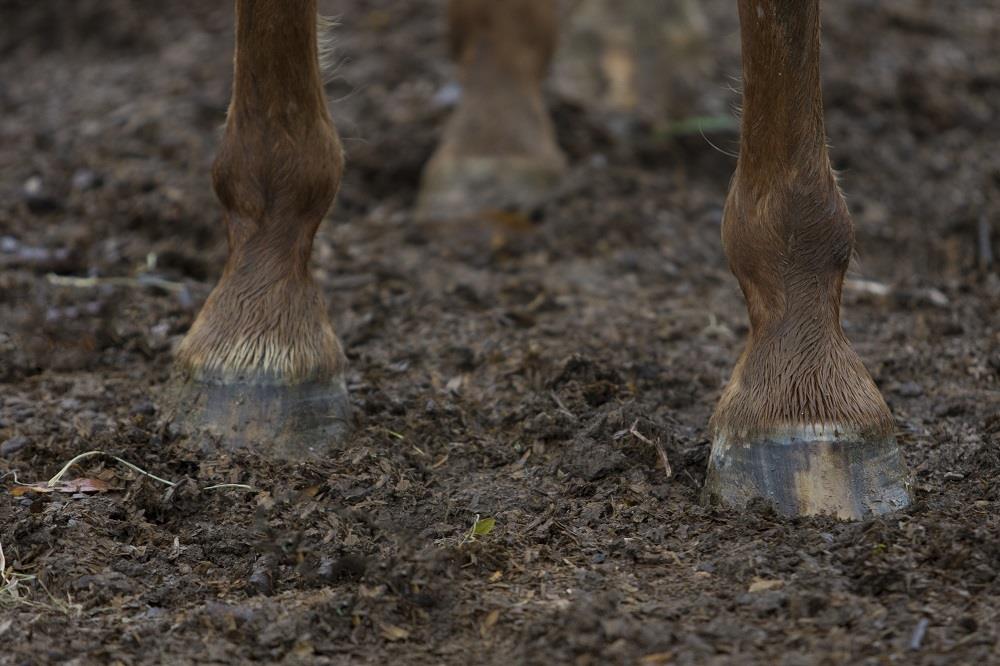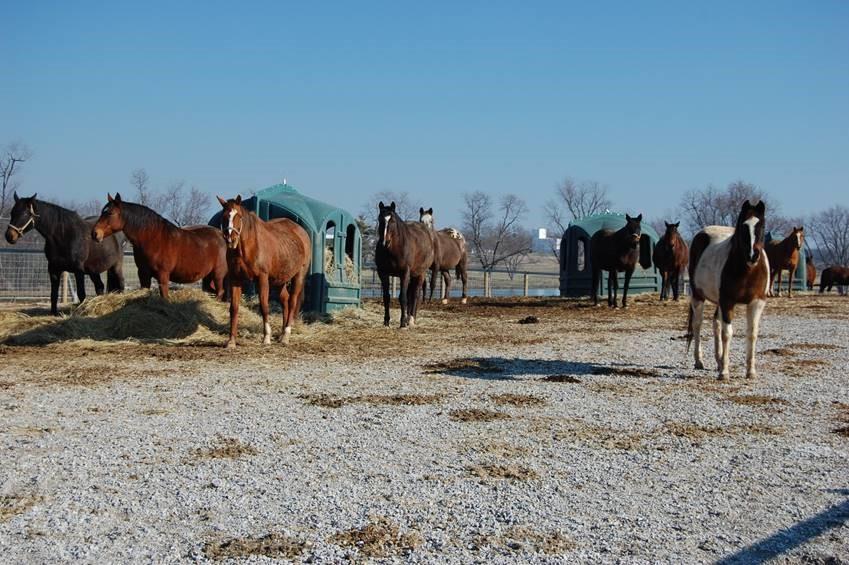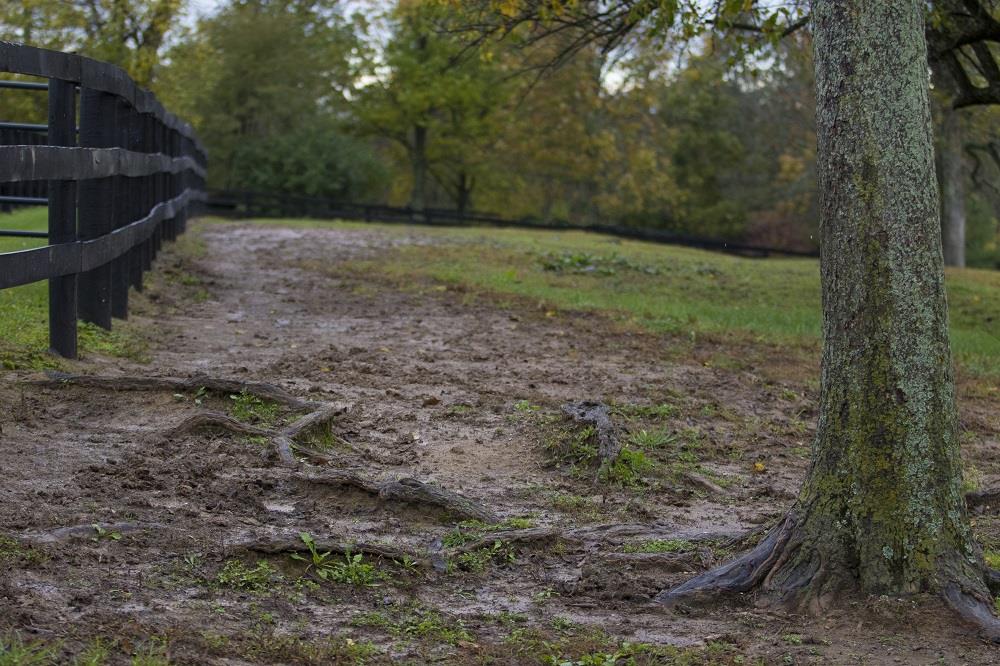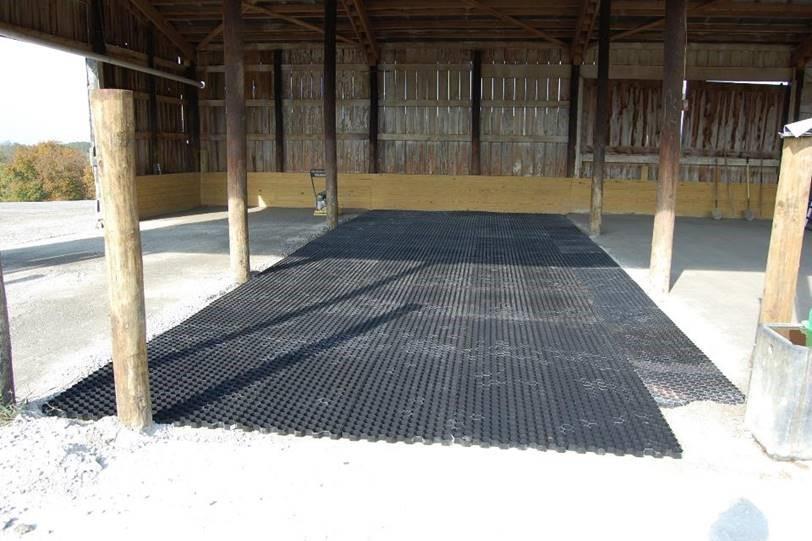Mud is hard on human and horse alike, and many a barn manager undoubtedly has wished they could simply wave a magic wand to get rid of it. Reducing mud around the barn and pasture isn’t quite that easy, but there are things you can do to prevent it. We asked Dr. Stephen Higgins, director of environmental compliance for the University of Kentucky’s Agricultural Experiment Station in Lexington, Ky., for his top mud-prevention tips.
“You have to be willing to try things and think out of the box,” Higgins said, “and sometimes you’ve got to be willing to break bad habits and traditions.”
1. Assess your horse’s daily environment.

Taking your area’s climate and average rainfall into account, consider how water moves through your horse’s paddock or pasture. “Is there natural drainage going through their paddock? Is there a summit position? Is it well drained or does water pool?” said Higgins. “A lot of people will lay out a horse farm looking at aerial photography and planning on two dimensions, length and width. They look for areas to place square paddocks or large paddocks, but they don’t consider the drainage.”
Ideally, gateways should be away from drainage areas—at the top of a slope rather than at the bottom, for example. Mud will be more likely in high-traffic areas, like gateways and spots where horses gather naturally, so it’s important to minimize that by shifting gates away from natural drainage paths.
2. Use pasture grass to help manage water flow.
“You want to protect your pastures from excess water by having them in a full canopy of grass,” Higgins explained. “That’s crop science 101. You don’t want any bare spots or denuded areas, because rain can cause a lot of damage.
“You want what we call sheet flow, where water flows as a shallow sheet across a big area. You want thick stands of forages or grasses to slow water down to filter it and hang on to it as much as possible” to prevent rapid soil run-off—and to water your pasture grass naturally, Higgins explained.
3. Control horse traffic.

Keeping horses in for part of the day allowing a paddock to “rest” without horses for a time helps prevent overgrazing and soil compaction—both contributors to mud. During prolonged, heavy rain, consider stabling your horses to help prevent soil damage. “If they’re out in a field, they’re out there trampling it,” said Higgins. “Keep them confined and let the water perk in those soils, then turn the horses out.”
4. Control the flow from barn downspouts.
Barn and arena roofs create a lot of run-off that needs direction, and horse activities—from washing to grazing—require water. That’s a marriage made in heaven, says Higgins.
“You need to harvest or manage every drop of water that falls on your farm,” Higgins said. “You need to manage water come out of downspouts so it doesn’t create gullies and concentrated flows that end up eroding soil and moving soil away—which also creates mud areas.”
Collecting roof water in tanks or via rain barrels under downspouts is another idea. “Then you can use that water to keep down dust in your arena or to water vegetation or any number of things,” Higgins said. “That reduces mud and also saves you money.”
5. Install pervious concrete.
Unlike traditional concrete, pervious concrete captures water and allows it to filter down into the underlying soil, reducing run-off, mud, and erosion. “When you put water on that concrete, it actually goes through it,” Higgins said. “I’d definitely recommend it for a wash pad. You can also create a form and pour this stuff about a foot wide and 30 inches long, and it becomes a splash block under a downspout.”
6. Consider creating an all-weather pad.
In unavoidable heavy traffic zones—like feeding areas, water troughs, and places where horses hang out as a group—Higgins advises installing a heavy traffic pad that creates an all-weather surface. First, choose a flat site with well-drained soil on relatively high ground. For geotextile material, Higgins suggests trying farm stores and even highway construction suppliers. Ask for non-woven fabric, which is more suitable for water management.

Higgins has overseen installation of all-weather areas in pastures using geotextile fabric and 8” to 10” of compacted dense-grade aggregate gravel. It’s important to compact the gravel with a roller, Higgins said. “And the dust is essential, because it helps lock in the rock when it’s wet,” Higgins said.
“I’ll have horse owners who complain about gravel, saying it’s hard on horses’ feet, but mud also is hard on their feet,” Higgin said. “If you do the rock correctly, it’s a moot point.
“You want to hog out or remove the topsoil, probably 8” to 10” of it, until you get down to a compactable clay layer. Put the geotextile fabric in the bottom. It doesn’t go up on the sides or on the grass, just the bottom.”
Then fill in 8” to 10” of aggregate and cover it with no more than two inches of Class I sand or agricultural lime. “That gives the horses sandy footing to stand on,” Higgins explained.
“That soil you’ve removed will expand to 50% more than its original volume,” he added, “so you can use it to fill other problem areas, like holes or ditches, or you can sell it as topsoil and use that to pay for the all-weather pad project.”

Also helpful: plastic gravel pave and grass pave interlocking matrix bases, which can help prevent wear and gulley erosion and also provide more traction in gateways, run-in sheds, around water troughs, and more.
Higgins suggests that farm owners also contact their county conservation district and county extension office. “You might be able to use taxpayer dollars to help implement some of the suggestions on your farm through cost-sharing programs,” Higgins said.
Want more articles like this delivered to your inbox every week? Sign up here to receive our free Equestrian Weekly newsletter.
This article is original content produced by US Equestrian and may only be shared via social media. It is not to be repurposed or used on any other website aside from usequestrian.org.


